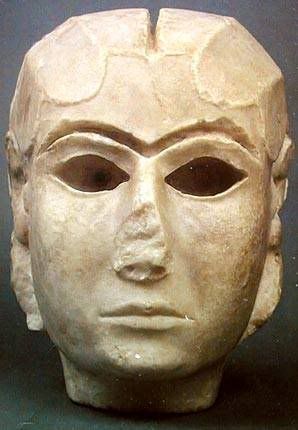History | Ch:- Writing and city life
1/24
Earn XP
Description and Tags
Name | Mastery | Learn | Test | Matching | Spaced |
|---|
No study sessions yet.
25 Terms
Q: When did agriculture begin in the northern Mesopotamian plains?
A: Around 7000-6000 BCE.
Q: When were the earliest temples built in southern Mesopotamia?
A: Around 5000 BCE.
Q: When did the first writing system appear in Mesopotamia?
A: Around 3200 BCE.
Q: What period marked the development of the city of Uruk?
A: Around 3000 BCE.
Q: When was cuneiform writing developed?
A: Around 2600 BCE.
Q: When was the Akkadian language introduced, replacing Sumerian?
A: Around 2400 BCE.
Q: When did the Assyrian Kingdom get established?
A: Around 1100 BCE.
Q: Who conquered Babylon in 331 BCE?
A: Alexander the Great.
Q: When was the cuneiform script deciphered?
A: In the 1850s.
Q: What does the name "Mesopotamia" mean?
A: "Land between rivers" (from Greek: mesos - middle, potamos - river).
Q: What were the primary rivers of Mesopotamia?
A: The Tigris and Euphrates.
Q: Why was Mesopotamian agriculture highly productive despite low rainfall?
A: Due to irrigation from river channels.
Q: What was the primary writing material used by Mesopotamians?
A: Clay tablets.
Q: What was the role of temples in Mesopotamian cities?
A: Temples served as religious centres, economic hubs, and storage units for goods.
Q: Which city was often referred to as "The City" in Mesopotamian tradition?
A: Uruk.
Q: Who was Gilgamesh?
A: A legendary king of Uruk, featured in the "Epic of Gilgamesh."
Q: Who was Sargon of Akkad?
A: A prominent ruler who established the Akkadian Empire around 2370 BCE.
Q: What is a "cuneiform" script?
A: A wedge-shaped script used in ancient Mesopotamia.
Q: Who was Assurbanipal?
A: A powerful Assyrian king known for his vast library collection.
Q: What was the significance of the potter's wheel?
A: It enabled mass production of pottery.
Q: What major mathematical contribution came from Mesopotamia?
A: The division of time into 12 months, 24 hours, and 60 minutes.
Q: Why was bronze significant in Mesopotamian society?
A: It was used for tools, weapons, and artistic works.
Q: What was the primary language of Mesopotamia before Akkadian?
A: Sumerian.
Q: What was the significance of source boxes in Mesopotamian studies?
A: They provided key archaeological evidence, such as clay tablets and artefacts, that revealed daily life and governance.

Q: What is the above image, and why is it significant in Mesopotamian history?
A: The Warka Head is a marble sculpture from Uruk (c. 3000 BCE), representing a woman's face with finely detailed features. It is significant for its craftsmanship, use of imported materials like lapis lazuli and shell for inlays, and its representation of early Mesopotamian artistic skills and religious symbolism, possibly depicting a goddess or high-status individual.